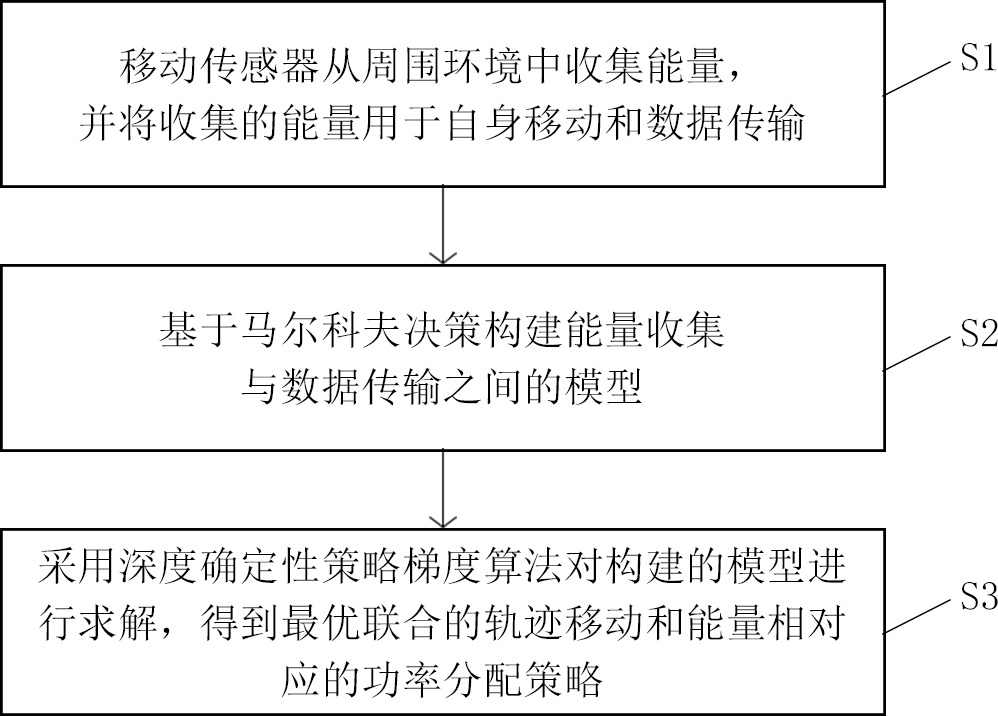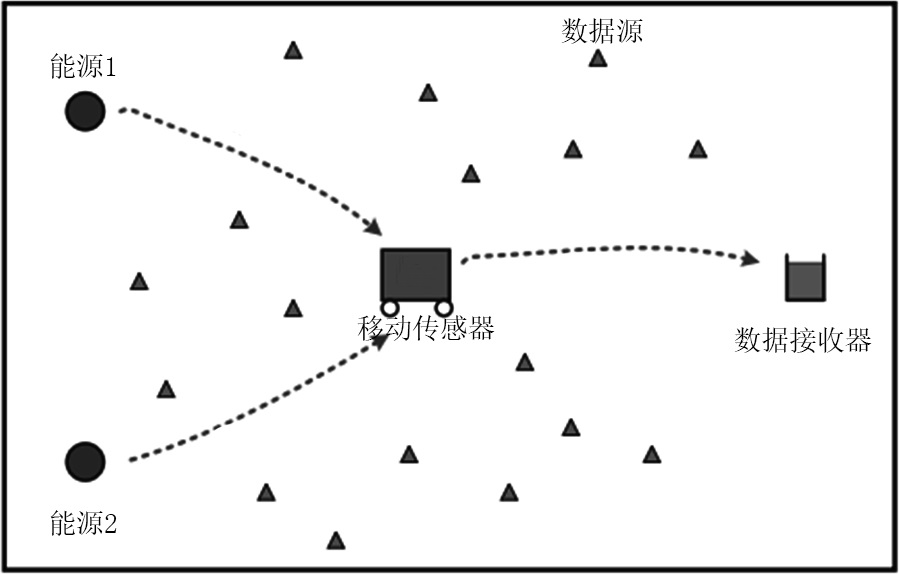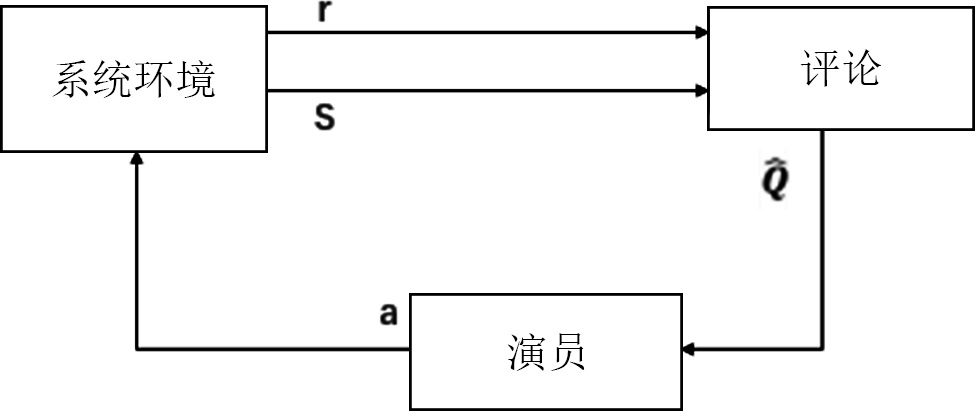A smart trajectory design method for mobile sensors based on sustainable data collection
A mobile sensor and trajectory design technology, applied in the field of wireless information transmission, can solve problems such as affecting the data throughput of sensor networks, maximize the utilization of environmental resources, improve exploration efficiency, and reduce deployment costs.
- Summary
- Abstract
- Description
- Claims
- Application Information
AI Technical Summary
Problems solved by technology
Method used
Image
Examples
Embodiment 1
[0050] This embodiment provides a mobile sensor intelligent trajectory design method based on sustainable data acquisition, such as figure 1 As shown, including the steps:
[0051] S1. Moving sensors collect energy from the surrounding environment and collect energy for their own movement and data transmission;
[0052] S2. Based on the model of energy collection and data transmission between Markov decision;
[0053] S3. The constructed model is solved by the depth deterministic policy gradient algorithm to obtain the optimal combined trajectory movement and energy corresponding to the power allocation strategy.
[0054] In step S1, the moving sensor collects energy from the surrounding environment and the collected energy is used for its own movement and data transmission.
[0055] The action of the moving sensor in this embodiment is to collect energy around the environment, and the collected energy is used for its own movement, so that the peripheral data is collected during mov...
Embodiment 2
[0120] A mobile sensor intelligent trajectory design method based on sustainable data acquisition is in that the embodiment of the first embodiment is in that:
[0121] This embodiment mainly verifies the effectiveness of the training algorithm.
[0122] Set a 10 × 10 two-dimensional right coordinate, wherein (x, y) is indicated in the position (x, y∈ [0, 10]) on the two-dimensional plane. Energy 1 and Energy 2 are located (0, 10) and (0, 0), respectively. MS can reposition in this area to find better energy collection and data transfer position, mobile speed, and angle definitely in [0, 1], [- π / 2, π / 2], where μ, σ represents energy The mean and variance of the random distribution, δ indicates that the mobile sensor moves consumption (ie, the energy Δ is consumed per move). Next, the effectiveness of the training algorithm (ie, algorithm 1) is verified by detecting the convergence of motion trajectory and algorithm learning of mobile sensor learning. In addition, the effects ...
PUM
 Login to View More
Login to View More Abstract
Description
Claims
Application Information
 Login to View More
Login to View More - R&D
- Intellectual Property
- Life Sciences
- Materials
- Tech Scout
- Unparalleled Data Quality
- Higher Quality Content
- 60% Fewer Hallucinations
Browse by: Latest US Patents, China's latest patents, Technical Efficacy Thesaurus, Application Domain, Technology Topic, Popular Technical Reports.
© 2025 PatSnap. All rights reserved.Legal|Privacy policy|Modern Slavery Act Transparency Statement|Sitemap|About US| Contact US: help@patsnap.com



